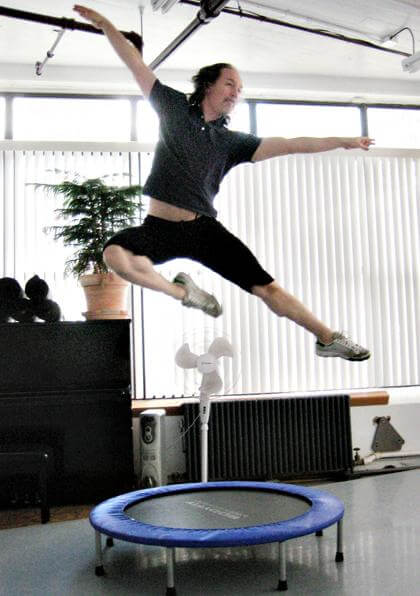By Jeremy Walsh
With a remote location and a population of 8,000, Kilgore, Texas, is not the likeliest place to produce a professional ballet dancer. But the small town in the eastern portion of the Lone Star State was where Long Island City School of Ballet founder Eric Ragan began his 20-year career.
Ragan, 43, has run the school at 44-02 23rd St. for three years. He also helps operate Ballet for Young Audiences and the Ballet Repertory of Long Island City, both of which hold performances in Queens. He said children in the borough have a much shorter distance to travel than he did, but “they don’t really realize how close they are to the center of the dance world.”
Those who do aspire to be professional dancers may also be hobbled by instructors who do not teach the fundamental physical and verbal vocabulary of ballet, which Ragan said are the building blocks of modern dance.
“You get a lot of kids taking dance for six or eight years and they audition at a performing arts school and they say, ‘Oh, they’re a beginner,’ he said. “You don’t really need to teach a 5-year-old jazz. It’s fun, but it’s not going to help them later.”
Ragan, who built the interior of the studio himself using the carpentry skills he learned from his rancher grandfather, took a long and winding route from his rural roots to the big city. His love of dance started in his childhood, when he began learning break dancing moves from films popular in the 1980s.
When he and a friend enrolled in junior college in Kilgore, they joined a modern dance class — partly to enhance their skills, partly to meet girls.
But they soon learned that modern dance was not synonymous with break dancing. Ragan’s friend lasted a week, but Ragan was hooked. His teacher recommended a ballet class, and Ragan began to immerse himself in the art.
He soon moved to Dallas, where he fell under the tutelage of Natasha Krassovska, a legendary figure from the Ballet Russe who had opened a school in the oil-rich American Southwest. Like many other aging professional dancers, Krassovska recognized where to find steady funding for her studio, Ragan said.
After joining the Tulsa Ballet Theatre and then dancing in troupes for several years in Switzerland, Ragan and his wife moved to Long Island City in 1998.
“We wanted to find a place that was kind of like being in Europe,” he said, praising the neighborhood’s elevated railways and diverse population.
Ragan danced for Suzanne Farrell, New York City Ballet founder George Ballachine’s muse and the nation’s most celebrated ballerina until her retirement in 1989, at the Kennedy Center in Washington for eight years before a friend in Long Island City approached him about teaching a ballet class for children.
“I wanted to give boys’ classes because I felt really singled out as a little kid,” he said. “Boys will not go to a ballet class, even at 5 years old. Culturally, it has a stigma that it’s for girls.”
For boys, Ragan calls it “sports dance” and teaches them the general principles of dance, including lessons on centrifugal force using a 5-foot-long replica of a Louisville Slugger baseball bat. He has about 40 students now, one-fourth of whom are male. But the boys’ interests do not completely exclude the performing arts.
“For the last three weeks, I have taught nothing but moonwalk,” he said, following the death of the late pop legend Michael Jackson, who was renowned for his iconic dance moves. “He was a huge influence on me.”
For more information on the Long Island City School of Ballet, call 718-781-1169.
Reach reporter Jeremy Walsh by e-mail at jewalsh@cnglocal.com or by phone at 718-229-0300, Ext. 154.































